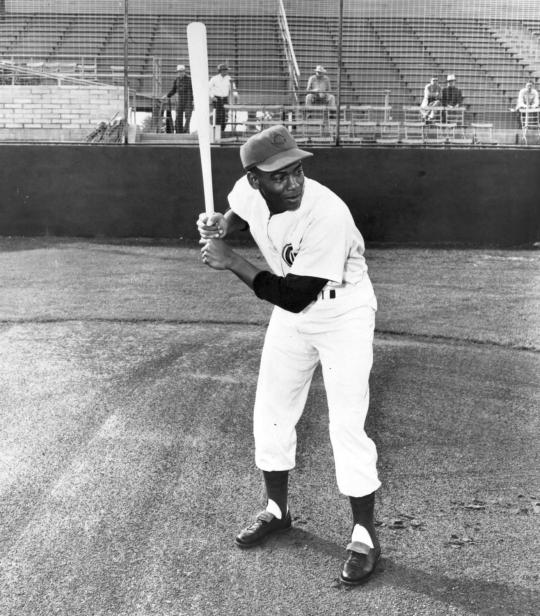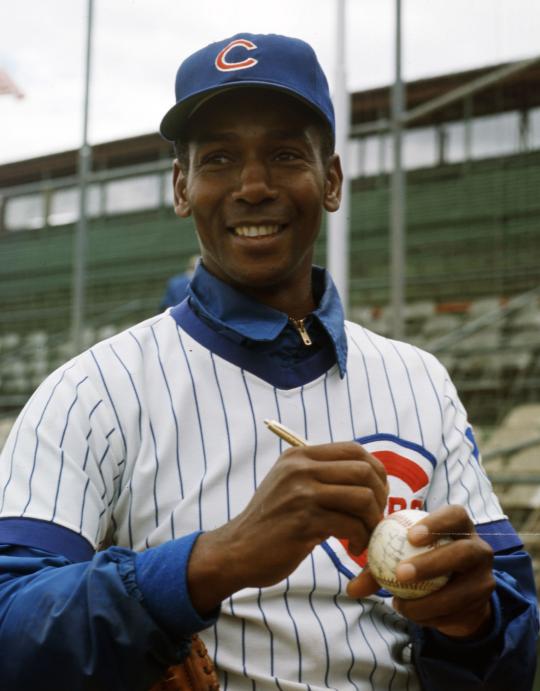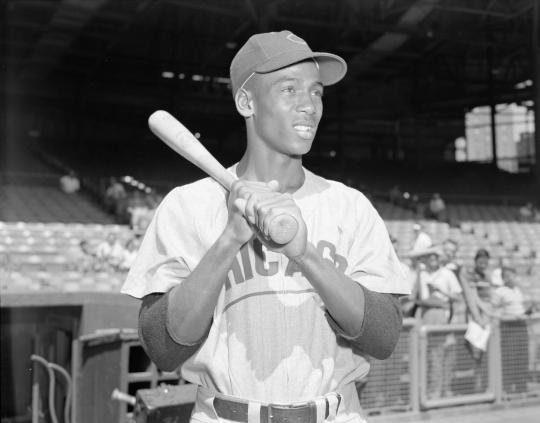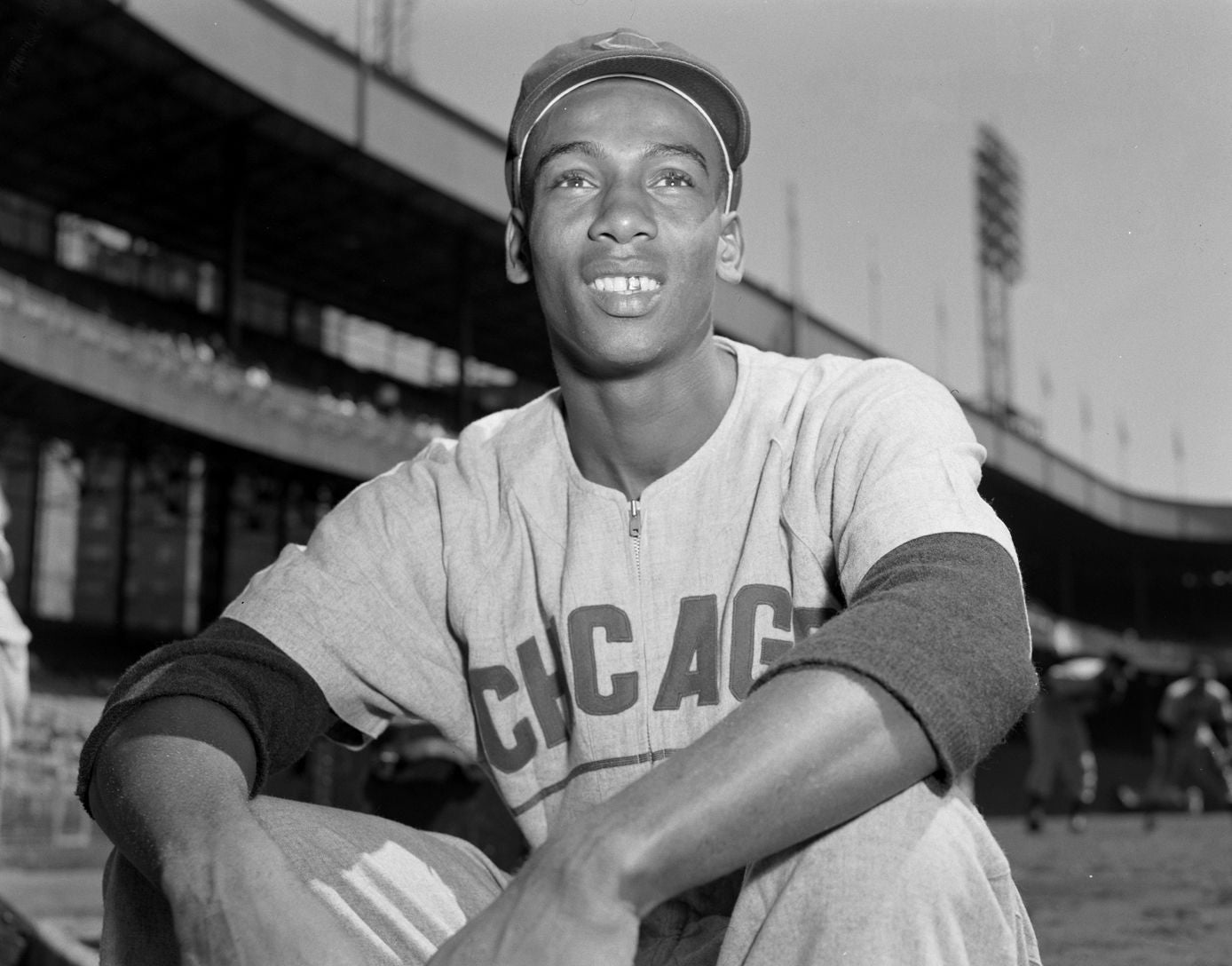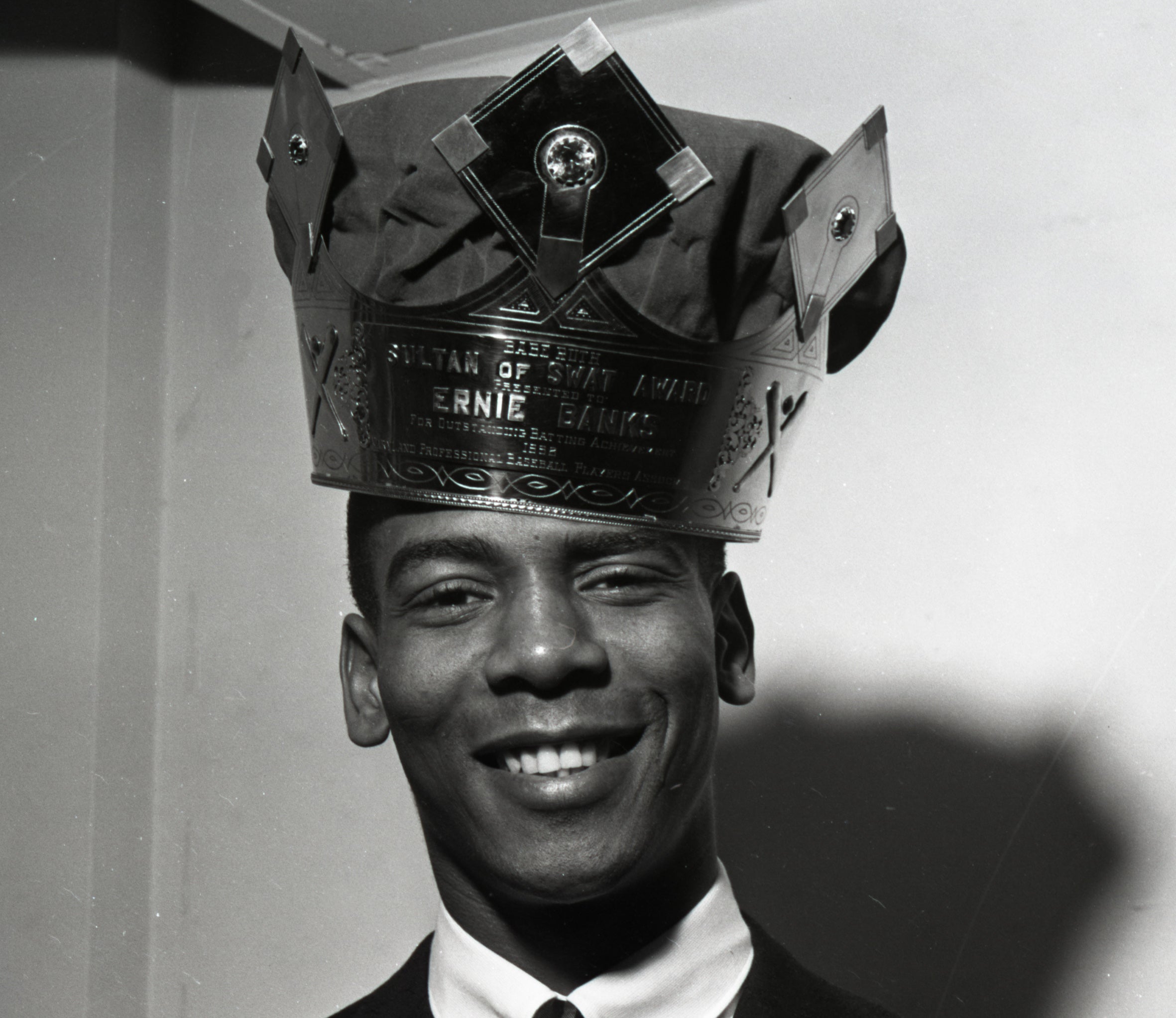- Home
- Our Stories
- Between shortstop and first base, Banks tried the outfield
Between shortstop and first base, Banks tried the outfield
Ernie Banks achieved unparalleled stardom at shortstop for the Chicago Cubs. And he cemented his Hall of Fame legacy as a first baseman.
In between, he spent a brief stopover in the outfield. On May 23, 1961, the transition began.
By that year, Banks was one of the game’s biggest stars. He redefined the offensive parameters of the shortstop position in the 1950s, hitting 44 home runs in just his second full big league season in 1955. By the end of the 1959 season, he had won back-to-back National League Most Valuable Player Awards – the first and still the only shortstop to achieve that milestone.
“Without him, the Cubs would finish in Albuquerque,” said former White Sox manager Jimmy Dykes of Banks.
As a result, the Cubs were looking to prolong Banks' career as long as possible. In 1960, Banks led all NL shortstops in putouts (283) and assists (488), but upon turning 30 years of age the following year, Banks began a transition away from the middle of the infield.
On May 23, 1961, Banks appeared in left field for the first time in his career in a 2-1, 10-inning loss to the Phillies at Wrigley Field. He would appear in left field in 23 games in 1961, with 104 more at shortstop and seven at first base. He hit 29 home runs and drove in 80 runs that year, marking the first time since 1953 that Banks failed to receive at least one vote in the NL Most Valuable Player balloting.
The next season, Banks played 149 games at first base, moving across the diamond to his new home. Banks would never again appear in a game at shortstop or the outfield.
By the end of his career following the 1971 season, Banks had played in more games at first base (1,259) than at shortstop (1,125). But his glory days in the middle of the infield – including his two MVP seasons – left a legacy that marks him as one of the game’s greatest shortstops.
When he retired, Banks had totaled 512 home runs, 1,636 RBI and 14 All-Star Game selections. He was elected to the Hall of Fame in his first year eligible in 1977.
“He rejoices merely in living,” said sportswriter Arthur Daley. “And baseball is a marvelous extra that makes his existence so much more pleasurable.”
Ernie Banks spent the first seven full seasons of his MLB career as a shortstop, leading the NL in games played six times during that span. In 1961, he began transitioning away from shortstop, first trying the outfield before ending up at first base. (Osvaldo Salas/National Baseball Hall of Fame and Museum)
Share this image:
Craig Muder is the director of communications for the National Baseball Hall of Fame and Museum

